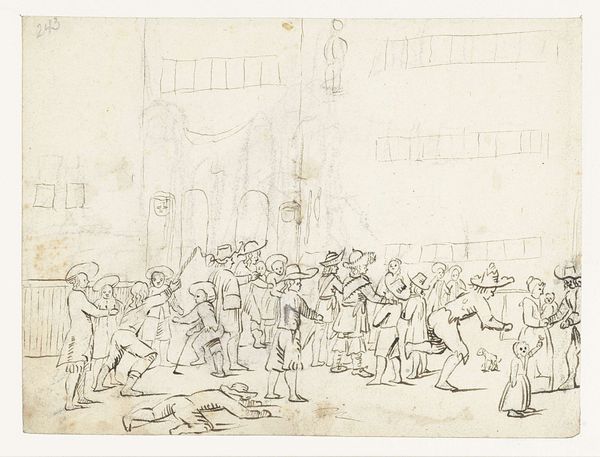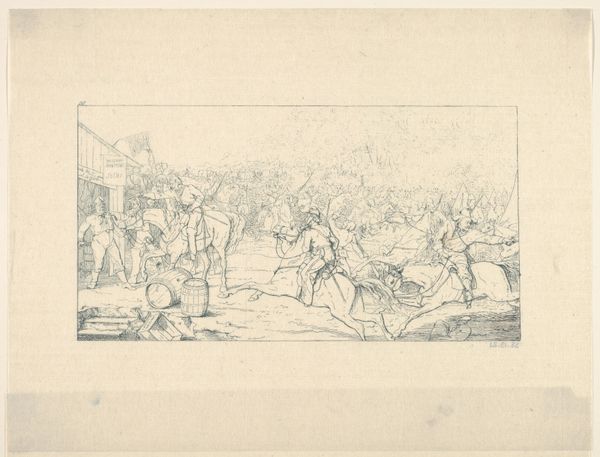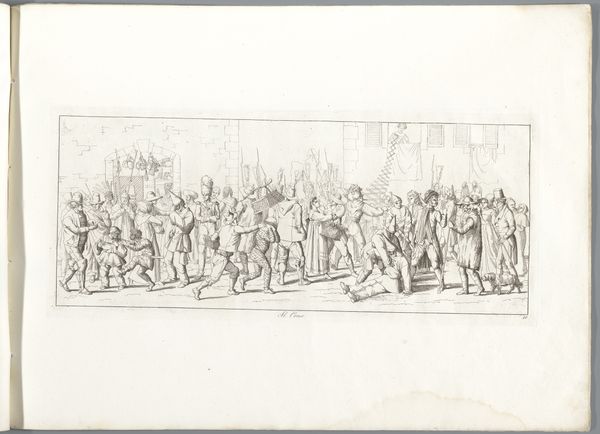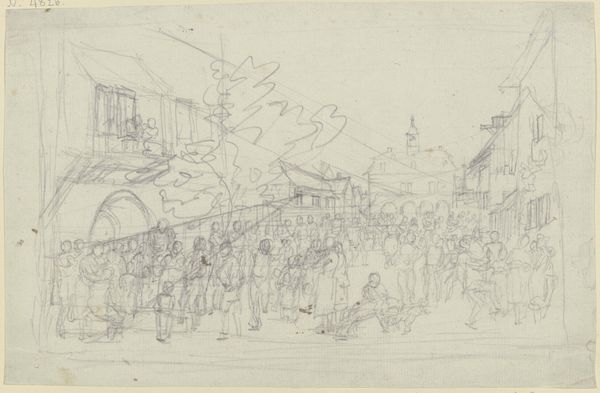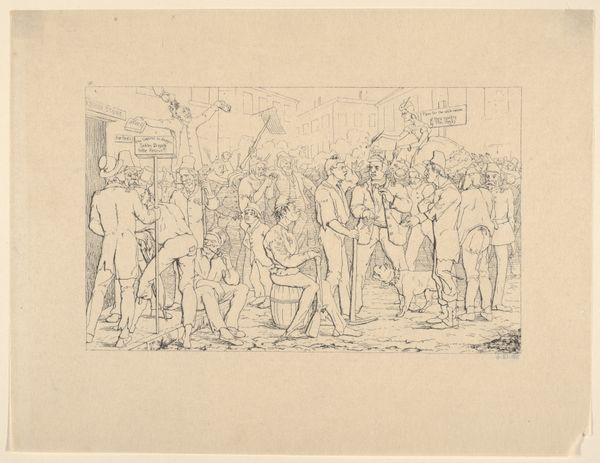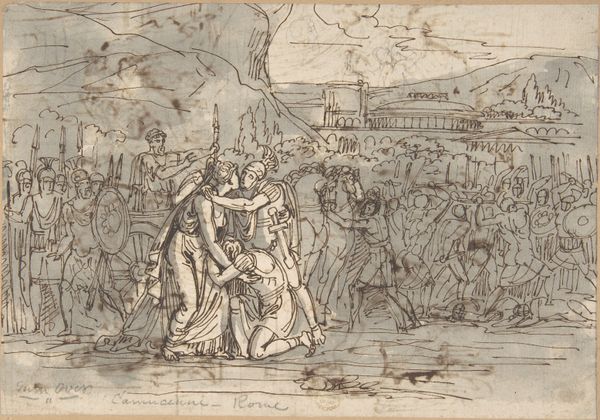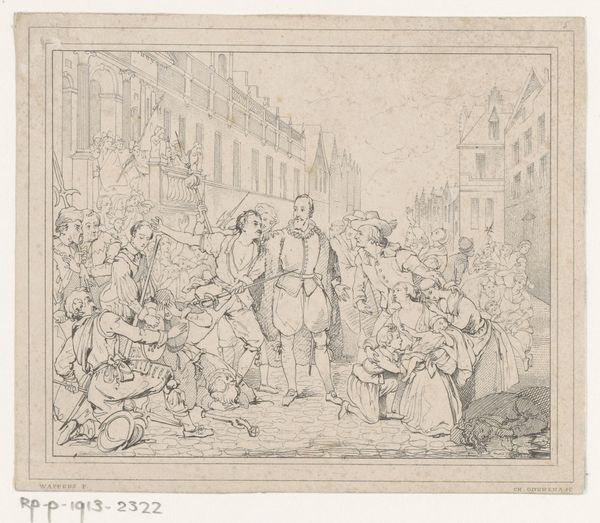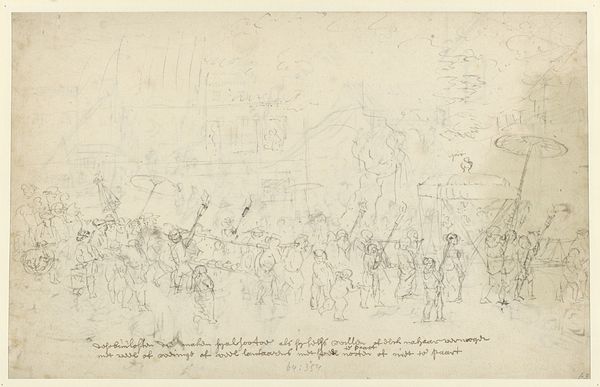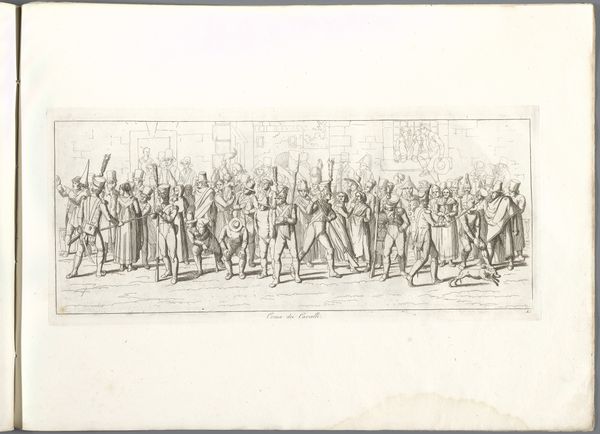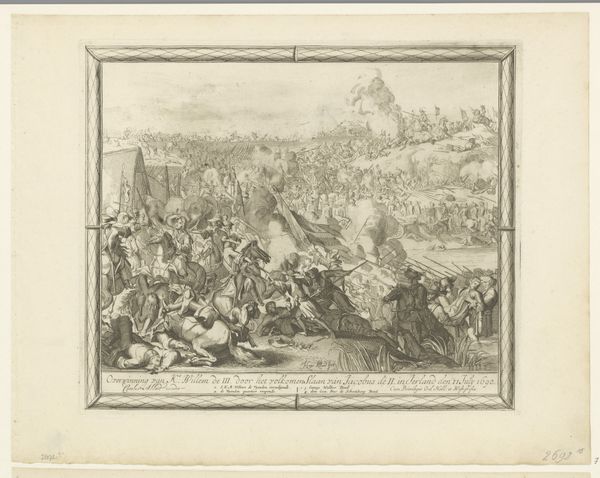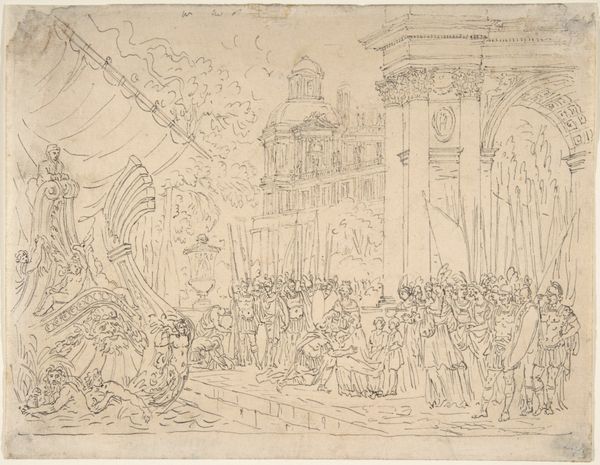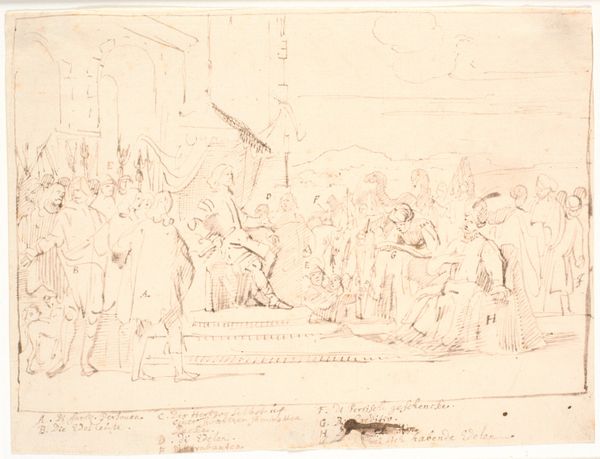
Battle in Baltimore, April 19, 1861 (from Confederate War Etchings) 1861 - 1863
0:00
0:00
drawing, print, engraving
#
drawing
#
narrative-art
# print
#
war
#
soldier
#
history-painting
#
engraving
Dimensions: Image: 4 x 7 1/8 in. (10.1 x 18.1 cm) Sheet: 7 5/8 x 10 7/16 in. (19.4 x 26.5 cm)
Copyright: Public Domain
Curator: The work before us, titled "Battle in Baltimore, April 19, 1861," is an engraving dating from 1861 to 1863 by Adalbert John Volck. Part of the "Confederate War Etchings," it’s currently held at the Metropolitan Museum of Art. Editor: The stark, almost unfinished quality strikes me immediately. It's a frenzied scene, yet rendered with this very delicate, precise line. You feel the chaos, but it's strangely detached. Curator: That detached feeling is quite deliberate, I think. Volck was a staunch Confederate sympathizer. These etchings served as potent propaganda, meant to stir up passions and shape perceptions of the conflict. He romanticized the confederate cause while demonizing the Union. Editor: Ah, now the visual symbols start to pop out. The way the Union soldiers are depicted feels almost cartoonish, exaggerated. Look at the banners they carry. They’re not simply flags; they're laden with what he perceives to be emblems of oppression and tyranny. Curator: Precisely. Notice how the composition favors the Confederate figures – they're often centered, depicted with more heroic postures, whereas the Union soldiers are shown in disarray, even cowardice. This imagery reinforces the Confederate narrative of righteous rebellion against an overreaching federal government. It attempts to show their bravery. Editor: And the contrast between the clean, almost classical lines used for some figures versus the hurried, chaotic hatching elsewhere is really powerful. It almost suggests two separate realities battling each other on the same plane. It seems there are symbols here meant to dehumanize certain factions of society. Curator: Indeed, the use of etching allowed Volck to disseminate these images widely, bypassing traditional channels and reaching a broad audience eager for visual narratives that validated their beliefs. Think about how crucial this kind of imagery was in shaping public opinion and solidifying allegiances during the Civil War. Editor: Looking at this piece, it reminds you that images are rarely neutral. They are infused with ideology and the power to influence minds. I look away and my memory takes something other than just art. Curator: Absolutely, it shows how deeply intertwined art and politics are, particularly during times of conflict and turmoil. A sobering reminder of how imagery can serve not just as documentation, but as active participant in shaping historical narratives.
Comments
No comments
Be the first to comment and join the conversation on the ultimate creative platform.
